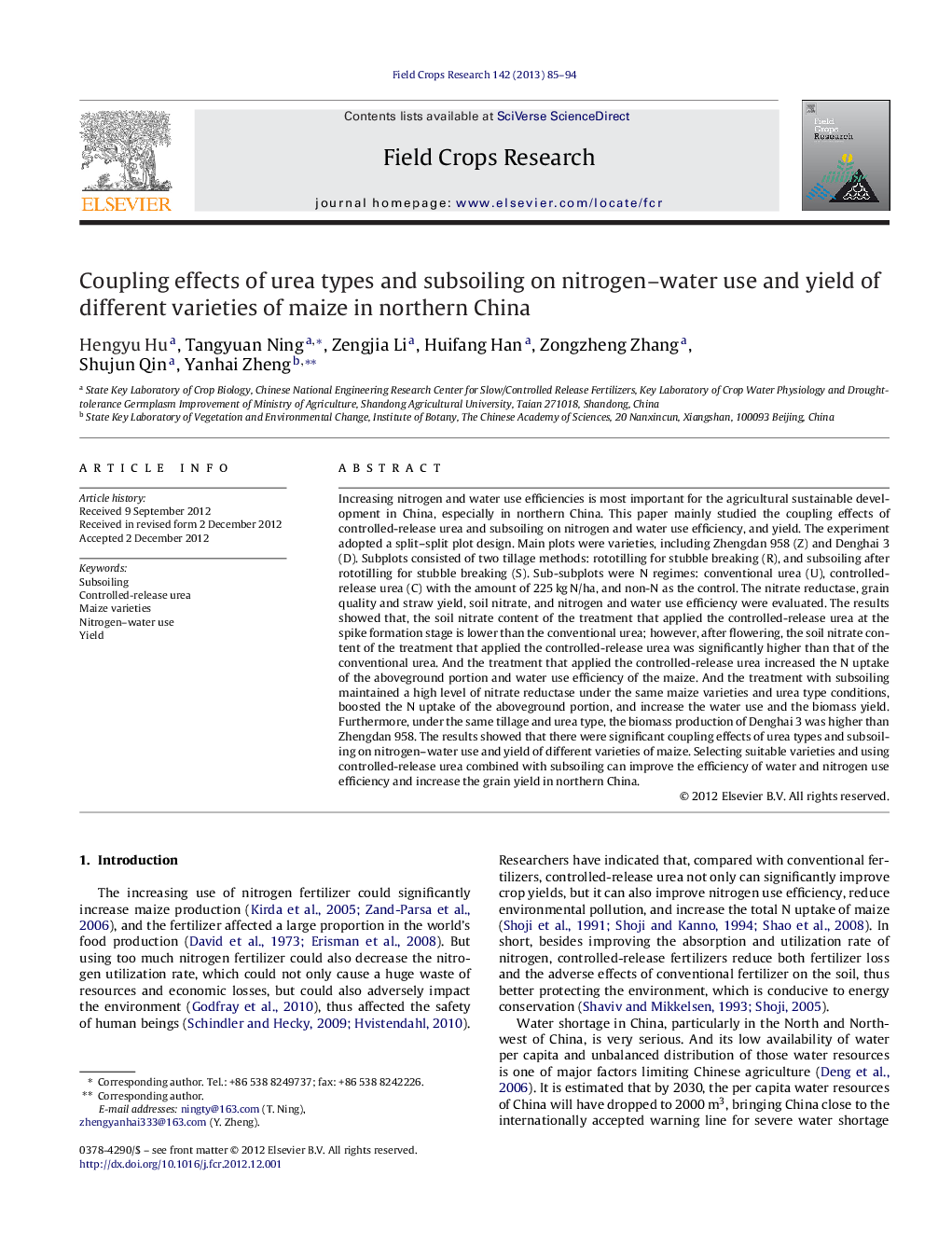| Article ID | Journal | Published Year | Pages | File Type |
|---|---|---|---|---|
| 4510265 | Field Crops Research | 2013 | 10 Pages |
Increasing nitrogen and water use efficiencies is most important for the agricultural sustainable development in China, especially in northern China. This paper mainly studied the coupling effects of controlled-release urea and subsoiling on nitrogen and water use efficiency, and yield. The experiment adopted a split–split plot design. Main plots were varieties, including Zhengdan 958 (Z) and Denghai 3 (D). Subplots consisted of two tillage methods: rototilling for stubble breaking (R), and subsoiling after rototilling for stubble breaking (S). Sub-subplots were N regimes: conventional urea (U), controlled-release urea (C) with the amount of 225 kg N/ha, and non-N as the control. The nitrate reductase, grain quality and straw yield, soil nitrate, and nitrogen and water use efficiency were evaluated. The results showed that, the soil nitrate content of the treatment that applied the controlled-release urea at the spike formation stage is lower than the conventional urea; however, after flowering, the soil nitrate content of the treatment that applied the controlled-release urea was significantly higher than that of the conventional urea. And the treatment that applied the controlled-release urea increased the N uptake of the aboveground portion and water use efficiency of the maize. And the treatment with subsoiling maintained a high level of nitrate reductase under the same maize varieties and urea type conditions, boosted the N uptake of the aboveground portion, and increase the water use and the biomass yield. Furthermore, under the same tillage and urea type, the biomass production of Denghai 3 was higher than Zhengdan 958. The results showed that there were significant coupling effects of urea types and subsoiling on nitrogen–water use and yield of different varieties of maize. Selecting suitable varieties and using controlled-release urea combined with subsoiling can improve the efficiency of water and nitrogen use efficiency and increase the grain yield in northern China.
► Controlled-release urea showed a higher water and nitrogen use efficiency than conventional urea. ► Subsoiling can provide favorable water and nitrogen condition for grain formation. ► Suitable varieties can improve the water and nitrogen use. ► Positive coupling effects of controlled-release urea and subsoiling on nitrogen–water use and yield of different varieties of maize.
